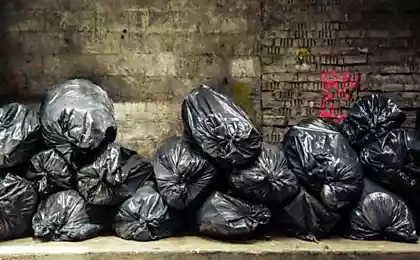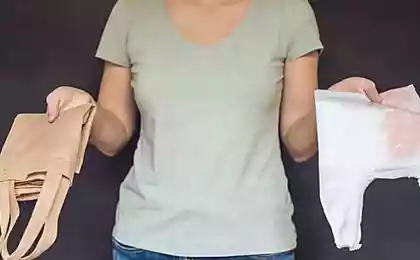2004
The emergence of cellophane in the USSR
We now seem strange and advertising posters with photos of babies wrapped in cellophane.
But 70 years ago, the cellophane was a novelty in the West, it touted as a universal product for packaging.
We were late for 50 years in the USSR plastic bags began to come into use since the late seventies.
Prior to this, the product is packed in paper.
Tsellofan- advertising 1930-1950's.
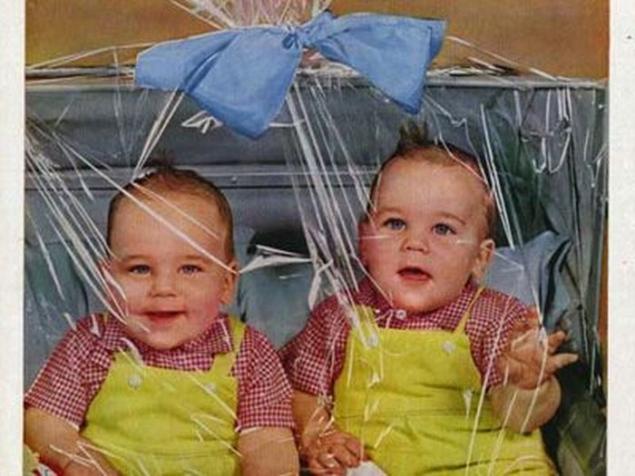
The sheets of cellophane on gifts carefully folded to, in his beautifully ochered- pack your gift. Packages for products washed and dried, and a large plastic bag in the USSR in the 70s were almost a cult object. Scotch brought from abroad as a gift! In the 70s it exactly in the sale was not, as I recall. Took care of the packaging of imported equipment, especially in wonder was polyethylene bubbles, is folded and stored.
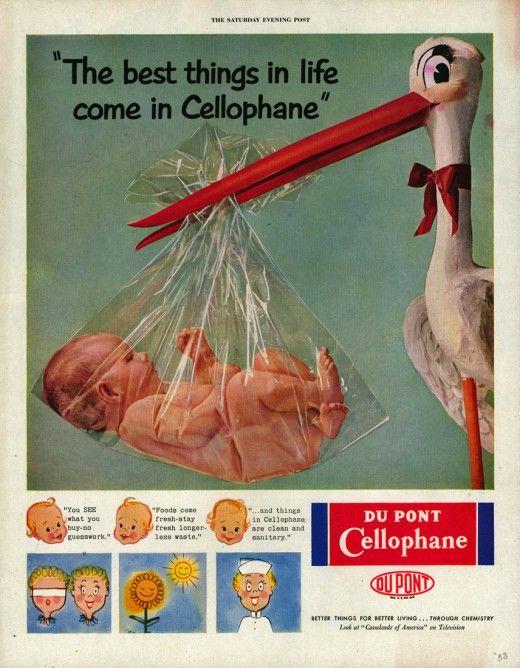
Cellophane - a material made from wood pulp. His invention, as often happens, it was a matter of chance. In 1911, a Swiss chemist trying to invent a cover for table cloths, to save them from stains. The result of his experiments was the moisture permeable transparent film - it was a cellophane.
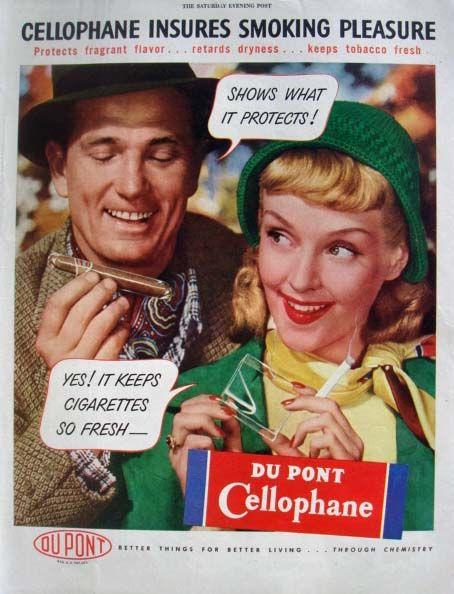
For the first time the industrial production of this material was established in France in 1913, and 11 years later the technology was acquired by DuPont and patenting, the following year began manufacturing cellophane.
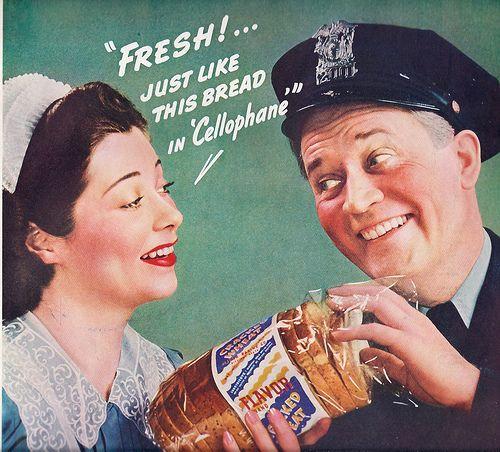
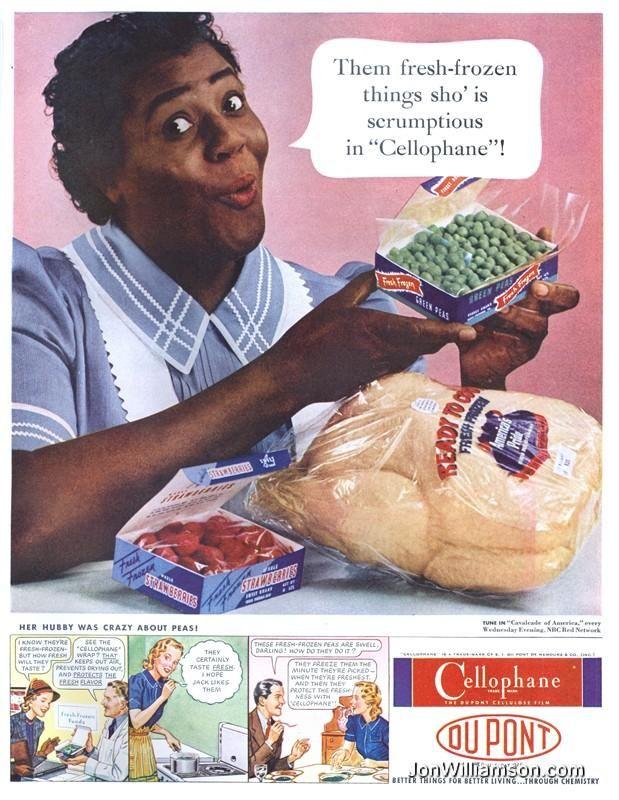
Food
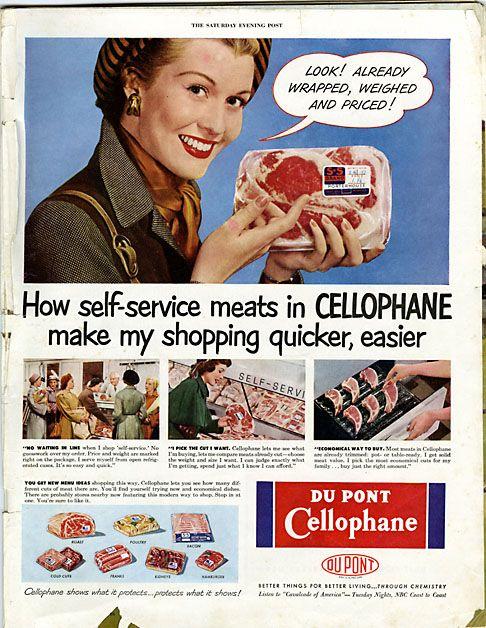
So on the packaging stage, a new character - a transparent water- and air-tight film, suitable for food storage.

The freshness of the goods contained in the cellophane has been so elusive, as the first two qualities. Cellophane film due to its tightness really helped to maintain the freshness of the product, which is particularly felt in the packaging of meat in a film of the split.
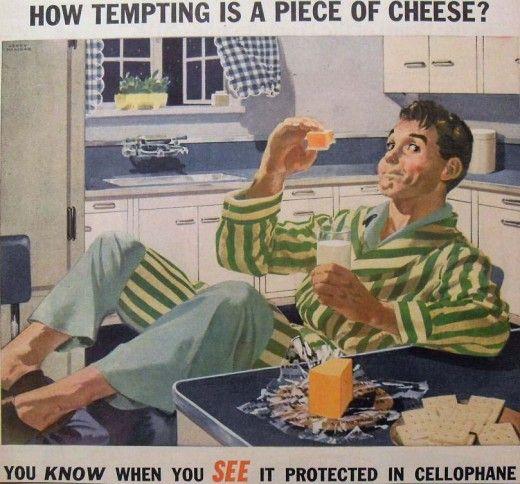

Cellophane, the Flavor Saver! 1936

Another advantage of cellophane is that packaging it allows the buyer to hold the product in hand and examine it from all sides without prejudice to the presentation of the product.
If before the buyer could pick up from the counter, such as buns, and then put it back and walk away, with the appearance of rolls, wrapped in cellophane, it became possible.

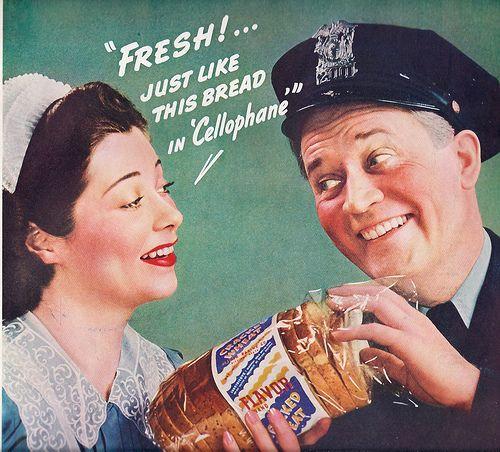
Ad-cellophane packaged bread
1940 «Cellophane by DuPont
»Fresh! Just like this bread in cellophane!
Cellophane given the opportunity to review the product without opening the package, which greatly stimulated the sales and increased the number of so-called casual purchases, ie purchases made under the influence of fleeting desires. Goods wrapped in cellophane aroused such desires are more likely than cardboard products.
In addition, the packaging cellophane carried the three qualities: shine, purity and freshness.
Luster is surrounded by a sort of magical goods an aura, a feeling of novelty products, attracts the eye.
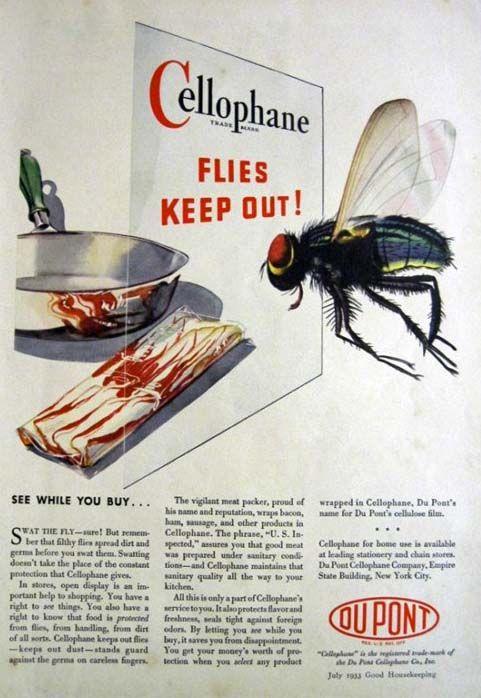
The buyer, of course, realizes that glitters is not the product itself, but it does not prevent him to choose the goods in a shiny package. There are cases when to revitalize sluggish trading in the store food wrapped in cellophane and trade was several orders of magnitude faster.
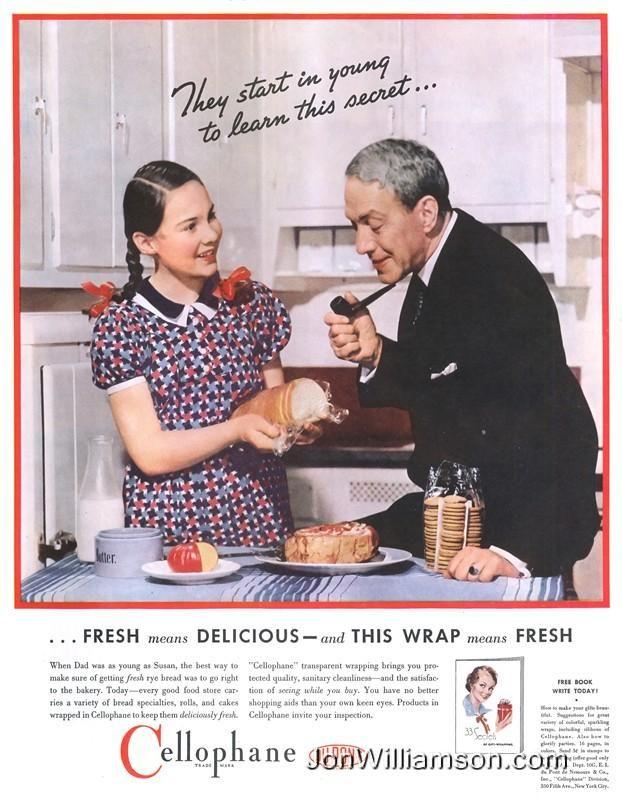
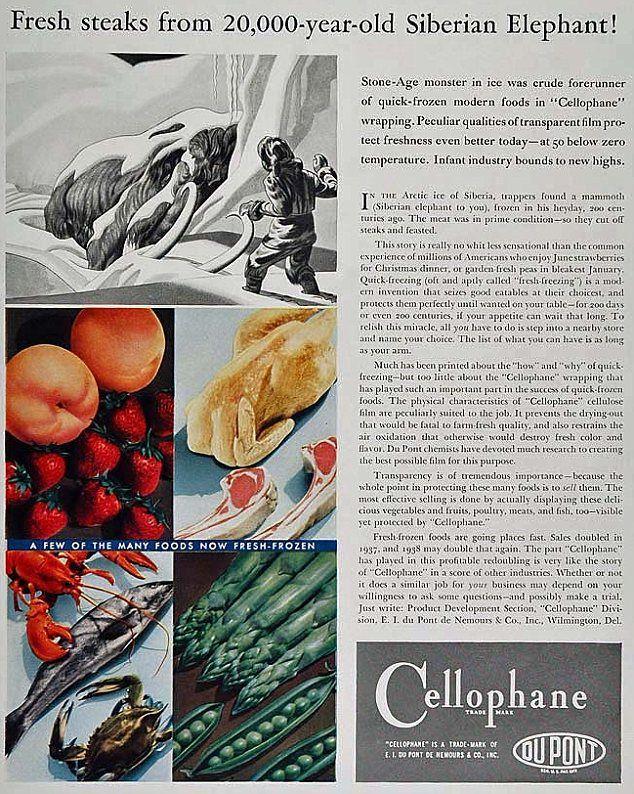
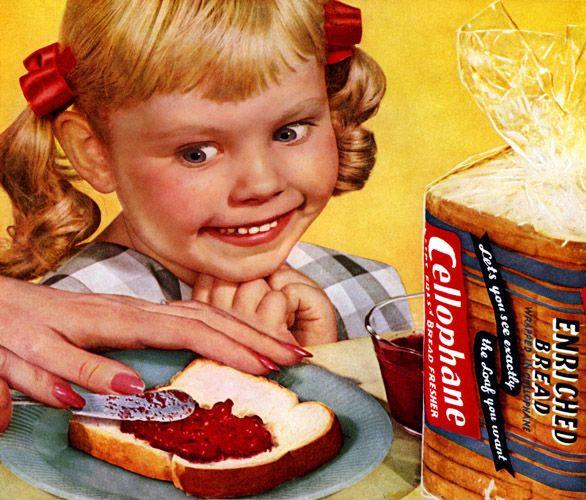


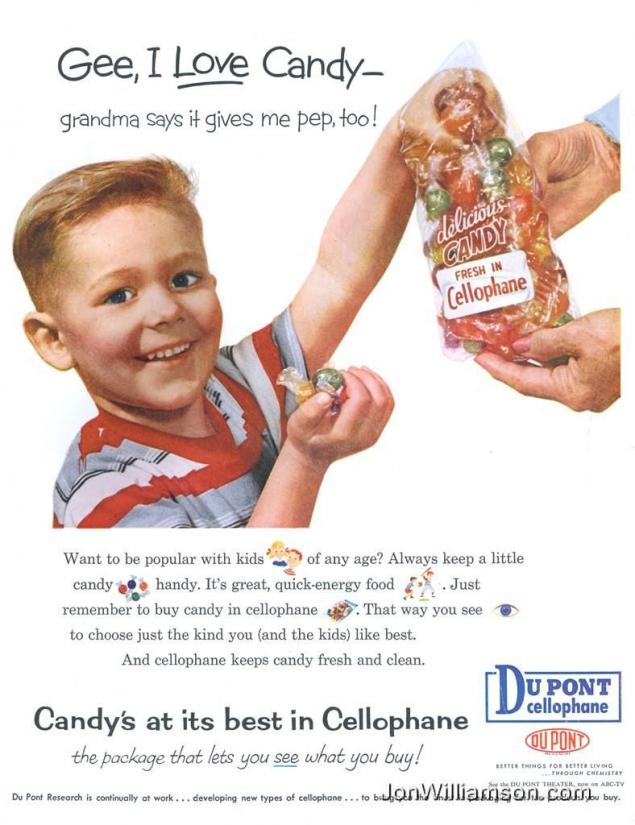

Tobacco and cigarettes
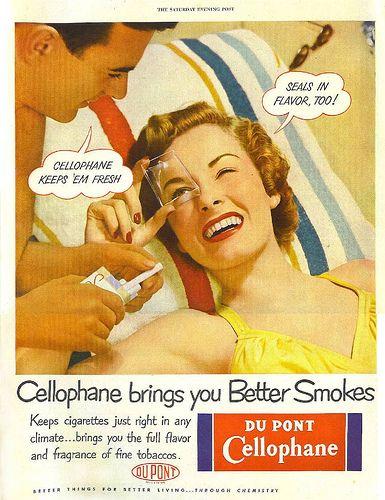
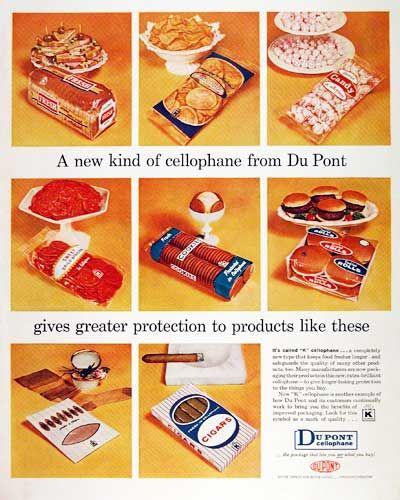
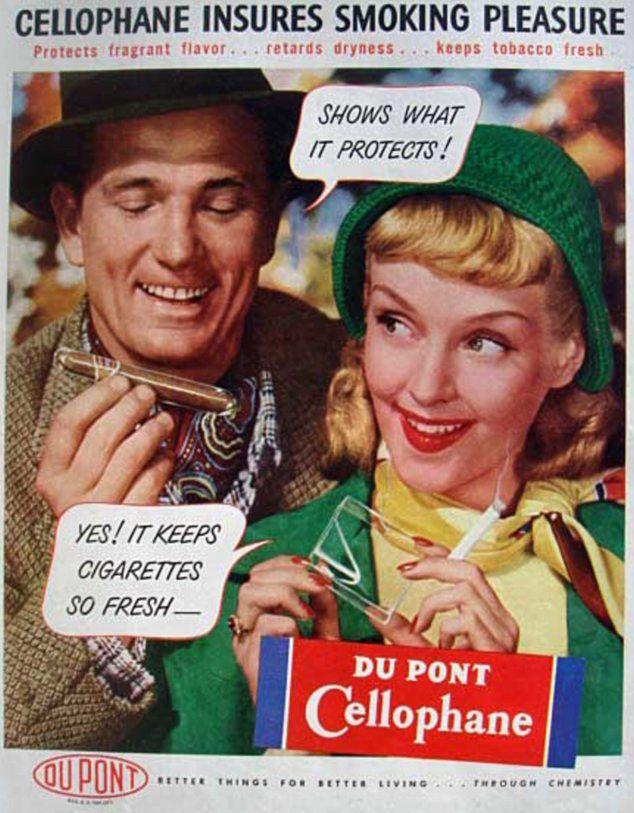
Health

DuPont Cellophane 1938
«I never buy handled hosiery ... heaven protect silk stockings from careless hands of shoppers and clerks!
Use cellophane package gives the buyer confidence in the purity of the product. Especially clearly this effect for packing in plastic toys. Parents seemed to tie the hands have not touched toys get out of the brewed cellophane packaging.
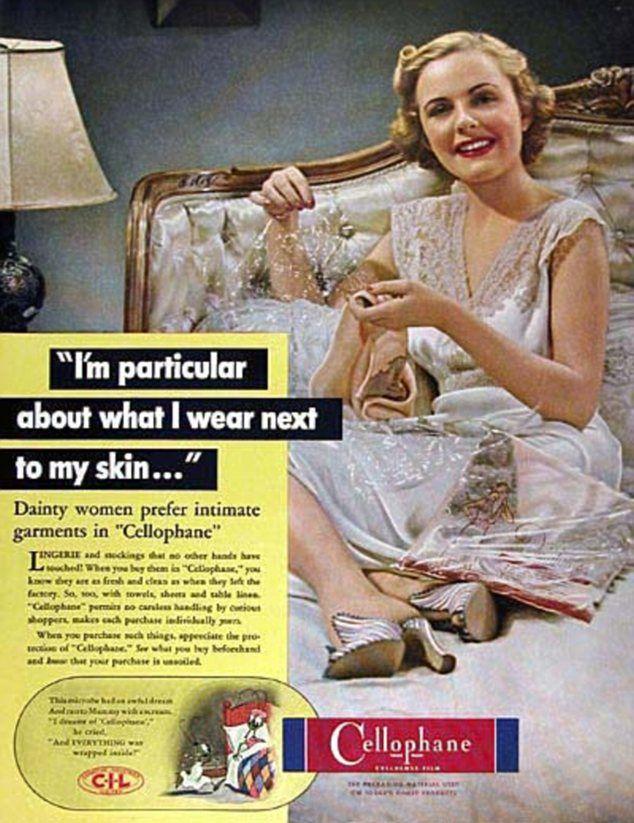
Children
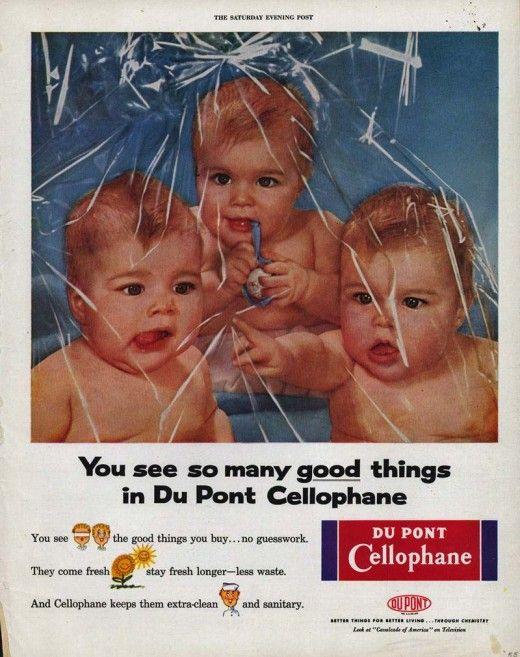
In The 1950's, Advertisers Thought It Was A Good Idea To Wrap Babies In Cellophane
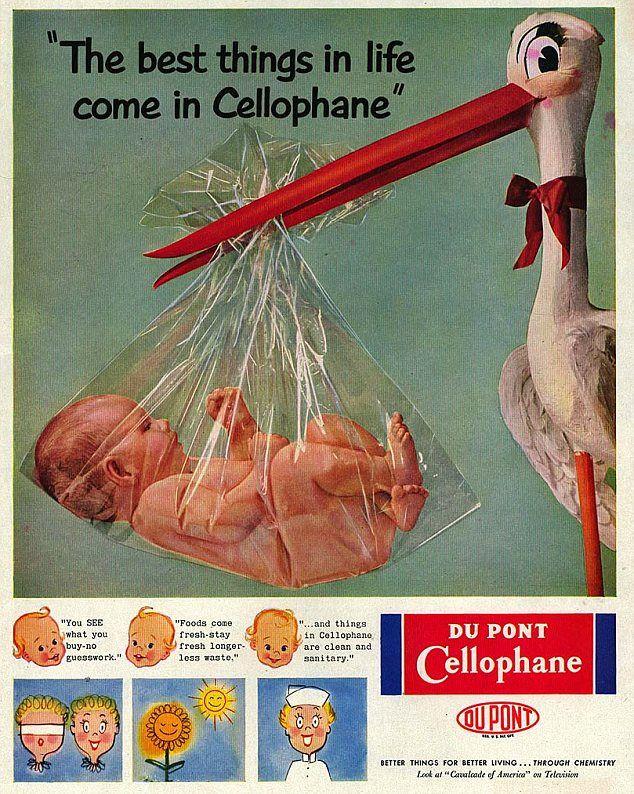
70 years ago, the plastic wrap was considered to be a thrilling novelty, as shown by these bizarre adverts touting the versatile product.
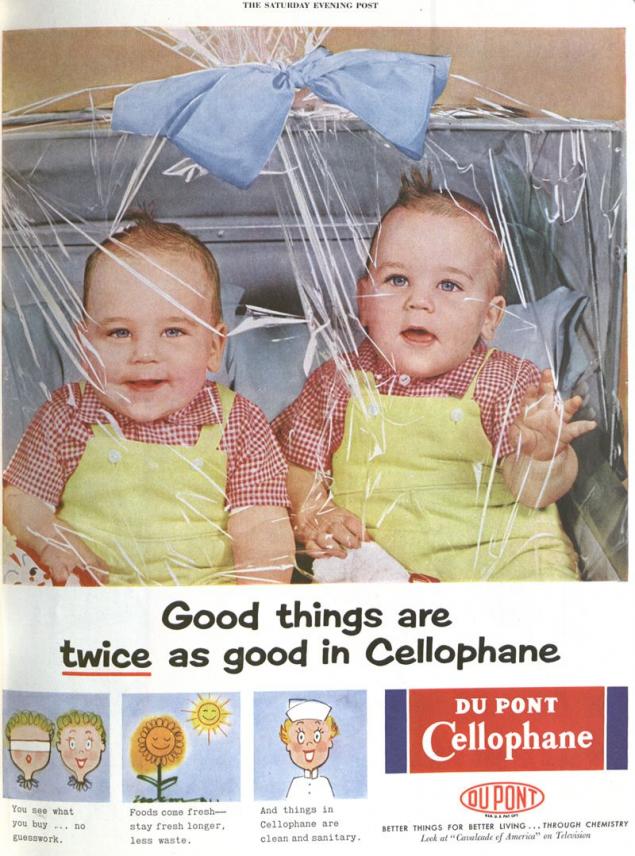
Scotch
There are several versions, where the name "Scotch". According to one of them-the Americans called scotch tape (Eng. Scotch - Scots), as at the time of the legendary Scottish parsimony, and the adhesive initially applied adhesive tape only edges.

Vintage Scotch Cellulose Tape packaging (pre-mid '40s).
1925 Richard Drew got a lab technician in the company Minnesota Mining and Manufacturing, which is engaged in the manufacture of sandpaper.

Leaders instructed him to monitor the testing of a new model of sandpaper «Wetordry» shops and car repair workshops. One day, while in one of these workshops, he noticed that the painting of vehicles with two or more colors from the masters of the dividing lines were obtained irregularly.
He promised painter to think of something. Drew brought testing to a mechanics tape width of 5 cm. The painter decided to use a prototype, but when he started to apply a different color, he noticed that the belt buckles. Looking closely, the painter realized that in order to save adhesive inflicted only on the edges of the tape, and reported it to the inventor.
But because funding was not only a few years later Drew engaged in refining his invention. And 8 September 1930 prototype tape was sent for testing to the customer in Chicago. The results fell short of expectations and costs.

1949
Initially, an adhesive tape used for packing wrappers for food, but in the years of the Great Depression, people will come up with many other ways to use Scotch tape.
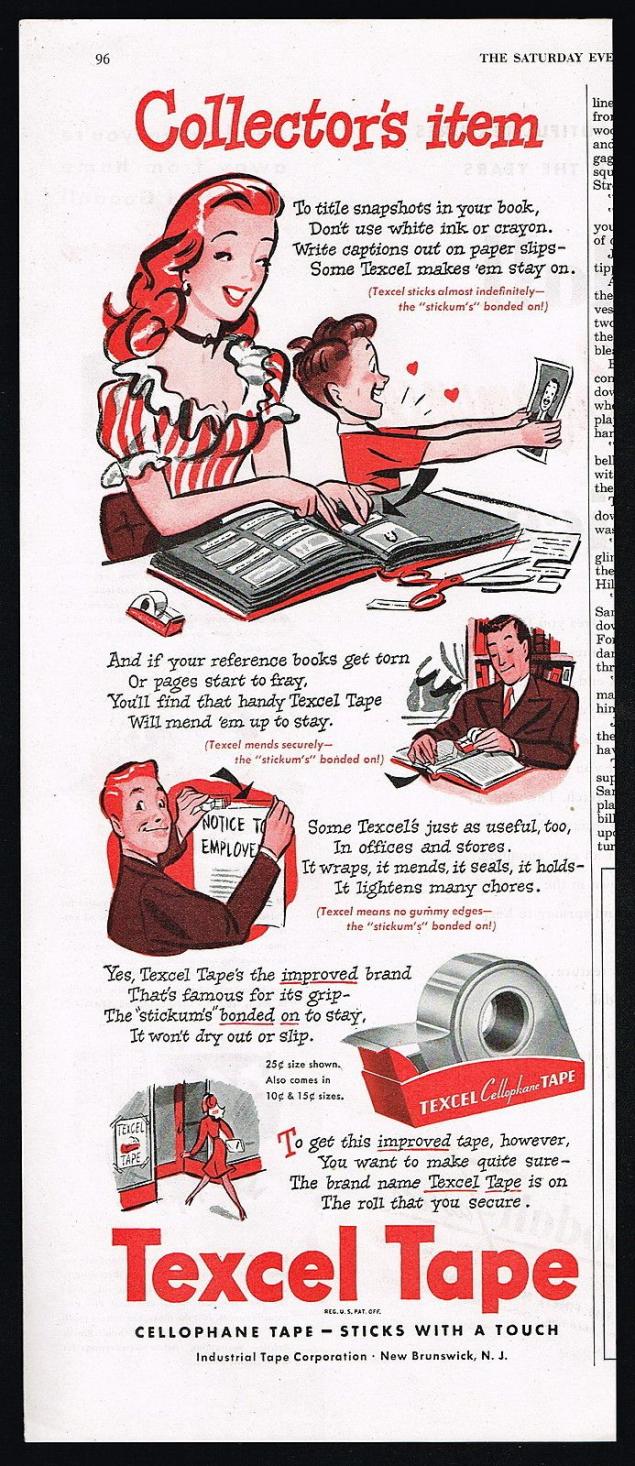
Initially, an adhesive tape intended for sealing wrapper for food. She had to use the bakers, grocers and meat packers. But people who are forced to save during the Great Depression, have thought up hundreds of new ways to use an adhesive tape at work and home: from sealing packages of clothing to the store broken eggs. This is where the scotch tape and met with torn pages of books and papers, broken toys, not sealed windows in winter, and even dilapidated bills.

Make home repairs easier with Scotch Cellophane Tape 1949
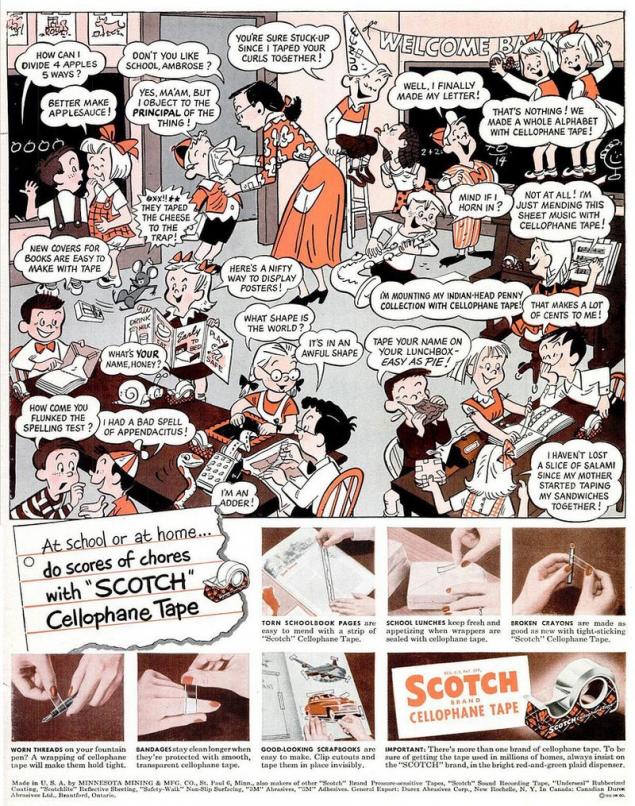
1950's
The first tape dispenser with a table-top, introduced in 1932, was made of iron. She weighed about seven kilograms! Seven years later, the company released the "snail" - a portable tape dispenser. The original version was made of stamped sheet metal, plastic model appeared in 1940.
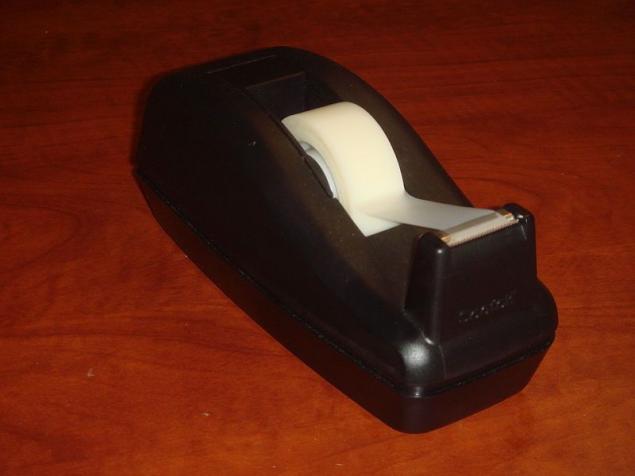
Tape_dispenser
In 1932, John Borden perfected tape, providing it with a feeder blade to cut a piece of tape with one hand.
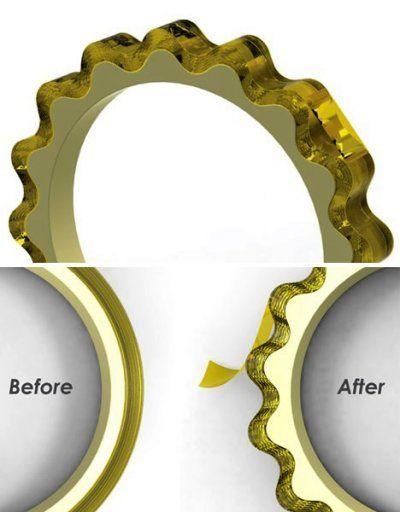
This form allows you to search not constantly tip of the tape.
Polyethylene
Plastic bags in the USSR is a symbol of initiation to foreign countries.
In the 1970s, plastic bags in the Soviet Union could be bought for the most part from black marketeers.
The transition to the Arbat in Moscow packs sold Gypsies. There were a few well-known points, which can be purchased in short supply and very fashionable plastic bags, in Moscow, they traded in the toilets at Stoleshnikov and Petrovka.

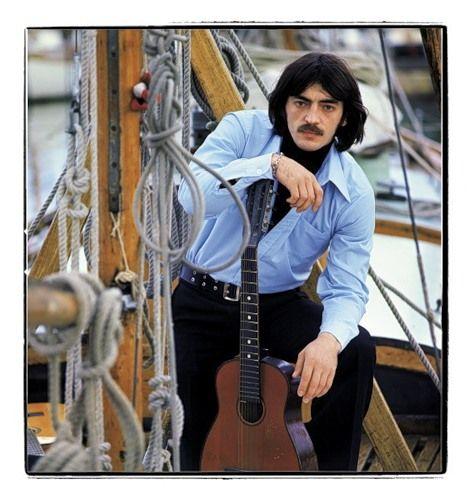
Hand-packs cost pretty well from 3 of Pugachev with Boyarsky (with them went into the 70s many) to 15 rubles for a beautiful "corporate" package.
With these foreign package was not ashamed to walk in, show off a foreign thing to the envy of other passers-by.
People did not know import brands and proudly walked with bags of cheap western networks.
Plastic bags in the Soviet Union were not the disposable packaging and carefully stored, beware. To reduce the load in a new package invested more worn, the packets were "on the way out" of their pre prokleivali- strengthened to avoid bursting. Beautiful restored, it was a science!
Laundry package was common. On the ropes with belem- large and small for the product dried in a tiled wall.
Also part of the youth went to Torbay of cloth or burlap, which is usually depicted "The Beatles", Dean Reed, pozzhe- Demis Roussos or group "Boney M", "ABBA" and others, as well as foreign brands of cigarettes: Marlboro, Winston, Camel, etc. Then these same pictures moved into packets, which produced the Caucasus "tsehoviki".
But most people are almost always carried with him shopping bags. They are comfortable, but terribly rubbed his hands and torn tights. There were even special plastic pieces, which were inserted into the handle shopping bags, to avoid calluses.
Incidentally, shopping bags back in vogue in the West, we have a shop in the arch "string bag", people buy with pleasure.
More on the topic:
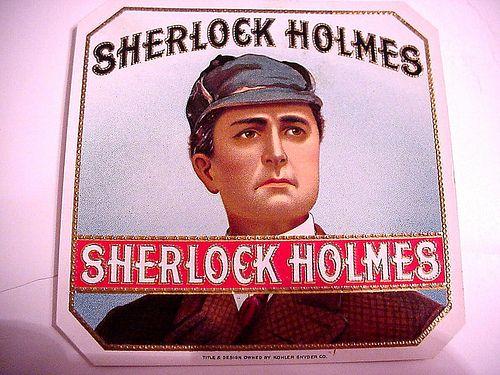

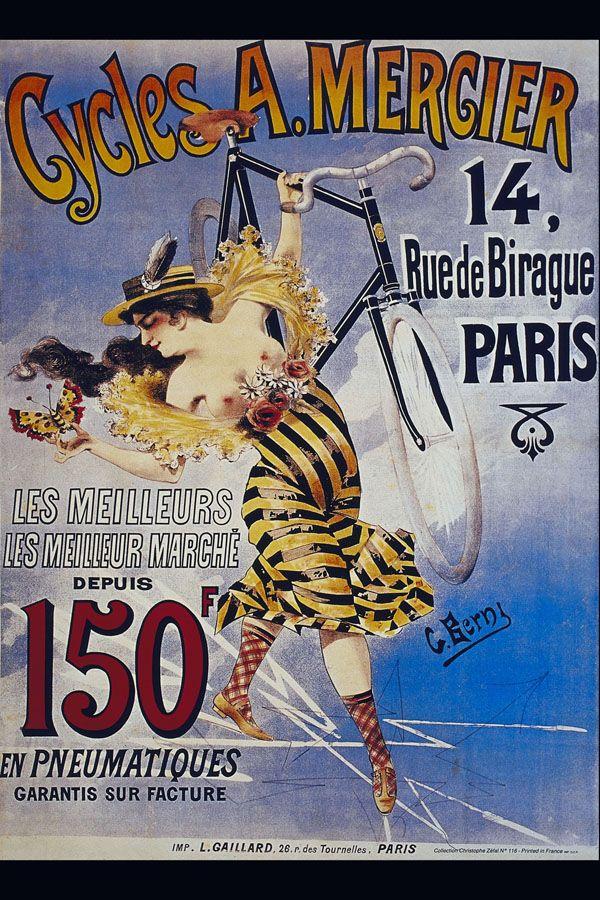
Post about a story familiar to all veschey- grinder, washing machines, cookers, irons, cash registers, hair dryers, vacuum cleaners:
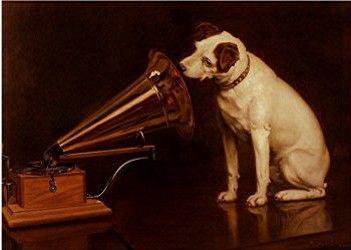

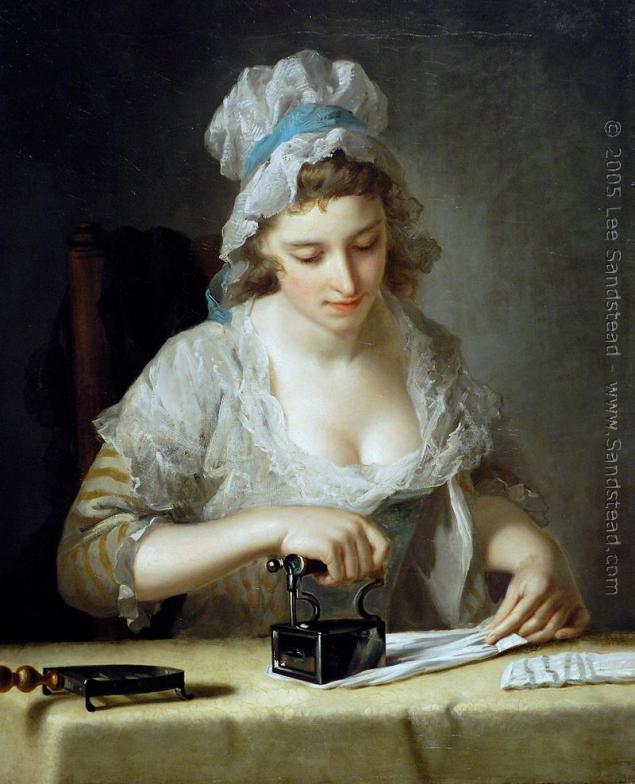
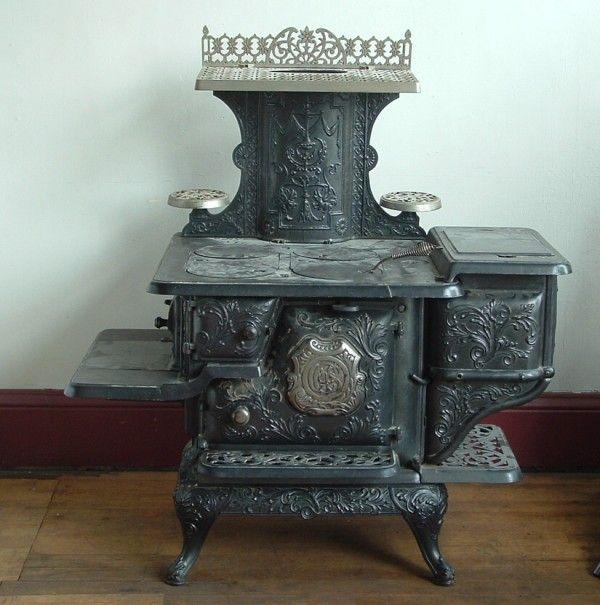
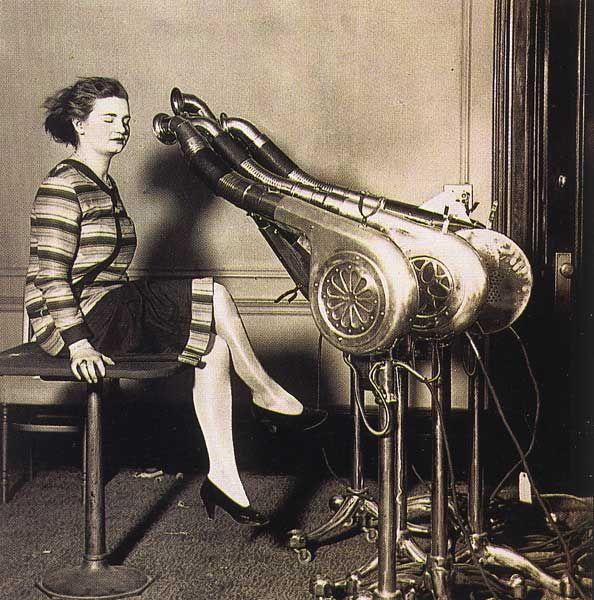
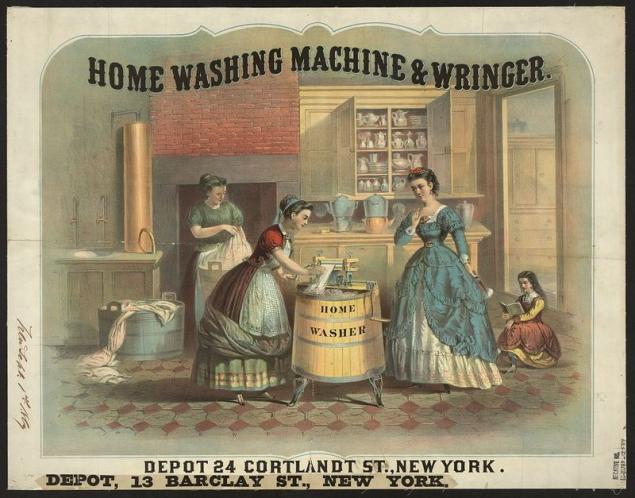
Source: marinni.livejournal.com
But 70 years ago, the cellophane was a novelty in the West, it touted as a universal product for packaging.
We were late for 50 years in the USSR plastic bags began to come into use since the late seventies.
Prior to this, the product is packed in paper.
Tsellofan- advertising 1930-1950's.

The sheets of cellophane on gifts carefully folded to, in his beautifully ochered- pack your gift. Packages for products washed and dried, and a large plastic bag in the USSR in the 70s were almost a cult object. Scotch brought from abroad as a gift! In the 70s it exactly in the sale was not, as I recall. Took care of the packaging of imported equipment, especially in wonder was polyethylene bubbles, is folded and stored.

Cellophane - a material made from wood pulp. His invention, as often happens, it was a matter of chance. In 1911, a Swiss chemist trying to invent a cover for table cloths, to save them from stains. The result of his experiments was the moisture permeable transparent film - it was a cellophane.

For the first time the industrial production of this material was established in France in 1913, and 11 years later the technology was acquired by DuPont and patenting, the following year began manufacturing cellophane.


Food

So on the packaging stage, a new character - a transparent water- and air-tight film, suitable for food storage.

The freshness of the goods contained in the cellophane has been so elusive, as the first two qualities. Cellophane film due to its tightness really helped to maintain the freshness of the product, which is particularly felt in the packaging of meat in a film of the split.


Cellophane, the Flavor Saver! 1936

Another advantage of cellophane is that packaging it allows the buyer to hold the product in hand and examine it from all sides without prejudice to the presentation of the product.
If before the buyer could pick up from the counter, such as buns, and then put it back and walk away, with the appearance of rolls, wrapped in cellophane, it became possible.


Ad-cellophane packaged bread
1940 «Cellophane by DuPont
»Fresh! Just like this bread in cellophane!
Cellophane given the opportunity to review the product without opening the package, which greatly stimulated the sales and increased the number of so-called casual purchases, ie purchases made under the influence of fleeting desires. Goods wrapped in cellophane aroused such desires are more likely than cardboard products.
In addition, the packaging cellophane carried the three qualities: shine, purity and freshness.
Luster is surrounded by a sort of magical goods an aura, a feeling of novelty products, attracts the eye.

The buyer, of course, realizes that glitters is not the product itself, but it does not prevent him to choose the goods in a shiny package. There are cases when to revitalize sluggish trading in the store food wrapped in cellophane and trade was several orders of magnitude faster.







Tobacco and cigarettes



Health

DuPont Cellophane 1938
«I never buy handled hosiery ... heaven protect silk stockings from careless hands of shoppers and clerks!
Use cellophane package gives the buyer confidence in the purity of the product. Especially clearly this effect for packing in plastic toys. Parents seemed to tie the hands have not touched toys get out of the brewed cellophane packaging.

Children

In The 1950's, Advertisers Thought It Was A Good Idea To Wrap Babies In Cellophane

70 years ago, the plastic wrap was considered to be a thrilling novelty, as shown by these bizarre adverts touting the versatile product.

Scotch
There are several versions, where the name "Scotch". According to one of them-the Americans called scotch tape (Eng. Scotch - Scots), as at the time of the legendary Scottish parsimony, and the adhesive initially applied adhesive tape only edges.

Vintage Scotch Cellulose Tape packaging (pre-mid '40s).
1925 Richard Drew got a lab technician in the company Minnesota Mining and Manufacturing, which is engaged in the manufacture of sandpaper.

Leaders instructed him to monitor the testing of a new model of sandpaper «Wetordry» shops and car repair workshops. One day, while in one of these workshops, he noticed that the painting of vehicles with two or more colors from the masters of the dividing lines were obtained irregularly.
He promised painter to think of something. Drew brought testing to a mechanics tape width of 5 cm. The painter decided to use a prototype, but when he started to apply a different color, he noticed that the belt buckles. Looking closely, the painter realized that in order to save adhesive inflicted only on the edges of the tape, and reported it to the inventor.
But because funding was not only a few years later Drew engaged in refining his invention. And 8 September 1930 prototype tape was sent for testing to the customer in Chicago. The results fell short of expectations and costs.

1949
Initially, an adhesive tape used for packing wrappers for food, but in the years of the Great Depression, people will come up with many other ways to use Scotch tape.

Initially, an adhesive tape intended for sealing wrapper for food. She had to use the bakers, grocers and meat packers. But people who are forced to save during the Great Depression, have thought up hundreds of new ways to use an adhesive tape at work and home: from sealing packages of clothing to the store broken eggs. This is where the scotch tape and met with torn pages of books and papers, broken toys, not sealed windows in winter, and even dilapidated bills.

Make home repairs easier with Scotch Cellophane Tape 1949

1950's
The first tape dispenser with a table-top, introduced in 1932, was made of iron. She weighed about seven kilograms! Seven years later, the company released the "snail" - a portable tape dispenser. The original version was made of stamped sheet metal, plastic model appeared in 1940.

Tape_dispenser
In 1932, John Borden perfected tape, providing it with a feeder blade to cut a piece of tape with one hand.

This form allows you to search not constantly tip of the tape.
Polyethylene
Plastic bags in the USSR is a symbol of initiation to foreign countries.
In the 1970s, plastic bags in the Soviet Union could be bought for the most part from black marketeers.
The transition to the Arbat in Moscow packs sold Gypsies. There were a few well-known points, which can be purchased in short supply and very fashionable plastic bags, in Moscow, they traded in the toilets at Stoleshnikov and Petrovka.


Hand-packs cost pretty well from 3 of Pugachev with Boyarsky (with them went into the 70s many) to 15 rubles for a beautiful "corporate" package.
With these foreign package was not ashamed to walk in, show off a foreign thing to the envy of other passers-by.
People did not know import brands and proudly walked with bags of cheap western networks.
Plastic bags in the Soviet Union were not the disposable packaging and carefully stored, beware. To reduce the load in a new package invested more worn, the packets were "on the way out" of their pre prokleivali- strengthened to avoid bursting. Beautiful restored, it was a science!
Laundry package was common. On the ropes with belem- large and small for the product dried in a tiled wall.
Also part of the youth went to Torbay of cloth or burlap, which is usually depicted "The Beatles", Dean Reed, pozzhe- Demis Roussos or group "Boney M", "ABBA" and others, as well as foreign brands of cigarettes: Marlboro, Winston, Camel, etc. Then these same pictures moved into packets, which produced the Caucasus "tsehoviki".
But most people are almost always carried with him shopping bags. They are comfortable, but terribly rubbed his hands and torn tights. There were even special plastic pieces, which were inserted into the handle shopping bags, to avoid calluses.
Incidentally, shopping bags back in vogue in the West, we have a shop in the arch "string bag", people buy with pleasure.
More on the topic:



Post about a story familiar to all veschey- grinder, washing machines, cookers, irons, cash registers, hair dryers, vacuum cleaners:






Source: marinni.livejournal.com




